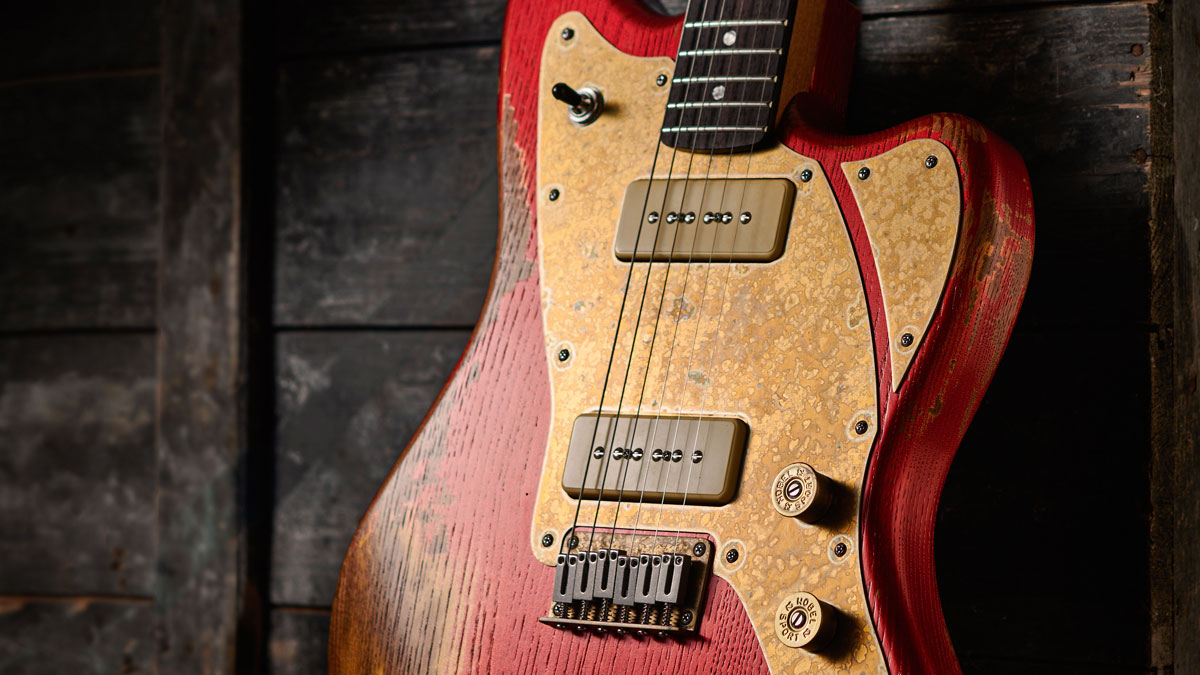Guitar World Verdict
There might be a lot of competition for boutique builds in this style and the price might be steep, but this Paoletti is one persuasive instrument when you get it in your hands, and there are plenty of custom options to tailor it exactly to your liking.
Pros
- +
Excellent simplistic, vintage-inspired build.
- +
Vibe-y aesthetic from finish and antiqued metal parts.
- +
Excellent platform for those pickups.
- +
Plenty of custom choice.
Cons
- -
The Paoletti experience isn’t cheap, but then neither are the guitars when it comes to their build and sound quality.
You can trust Guitar World
It’s not the first time Guitarist has featured a bashed-up looking offset electric guitar based on Fender’s late-’50s classic – and we doubt it’ll be the last. But to dismiss Paoletti as yet another bandwagon-jumping boutique builder is rather unfair. Based in Tuscany with family roots in the wine-making industry, Fabrizio Paoletti creates designs based on chestnut wood reclaimed from wine barrels.
These Paoletti instruments are available worldwide, and have some impressive users and signature artists – plus, they seem endlessly customisable. Our Loft Series 112 is just one example that can be ordered in a wide range of colours and different pickup configurations.
Paoletti’s build, however, is simple and straightforward and, of course, centres on chestnut body wood that forms an immaculately jointed three-piece spread here. It doesn’t look dissimilar to an ash, although the grain lines appear more regular, with a wavier appearance on the rear rib-cut contour; they’re lightly ridged, too.
Where the Candy Apple Red finish is worn through it looks like the chestnut is deep tan in colour, but that’s hard to determine with the worn red-over-gold paint.

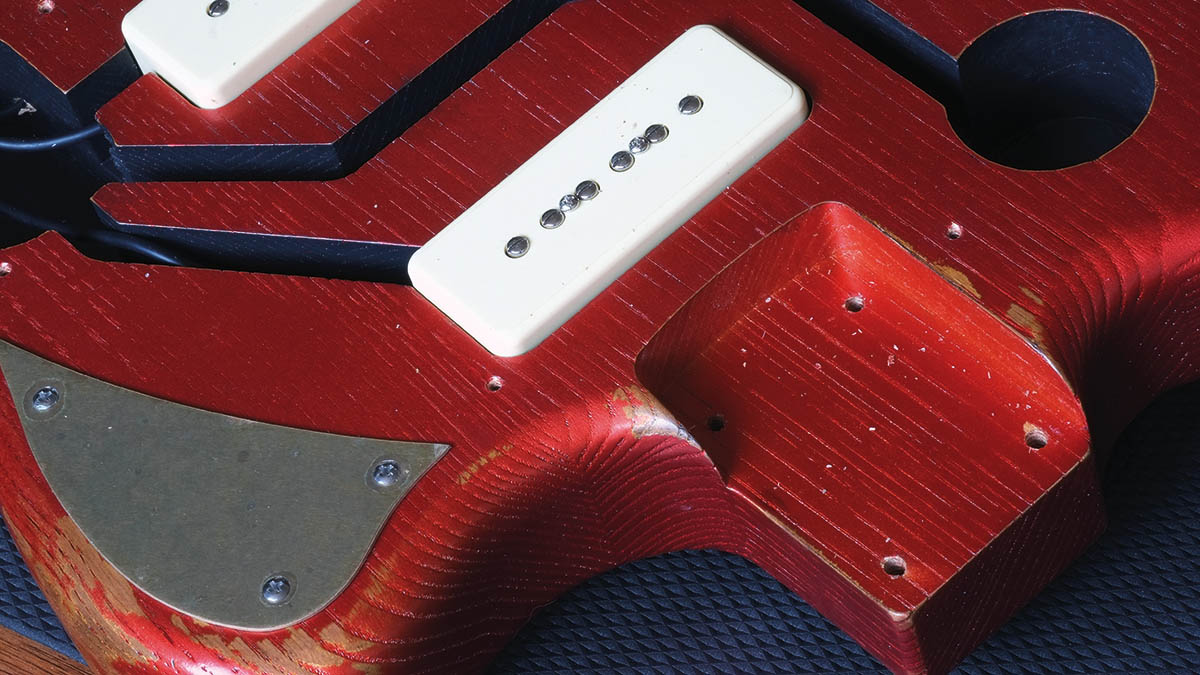
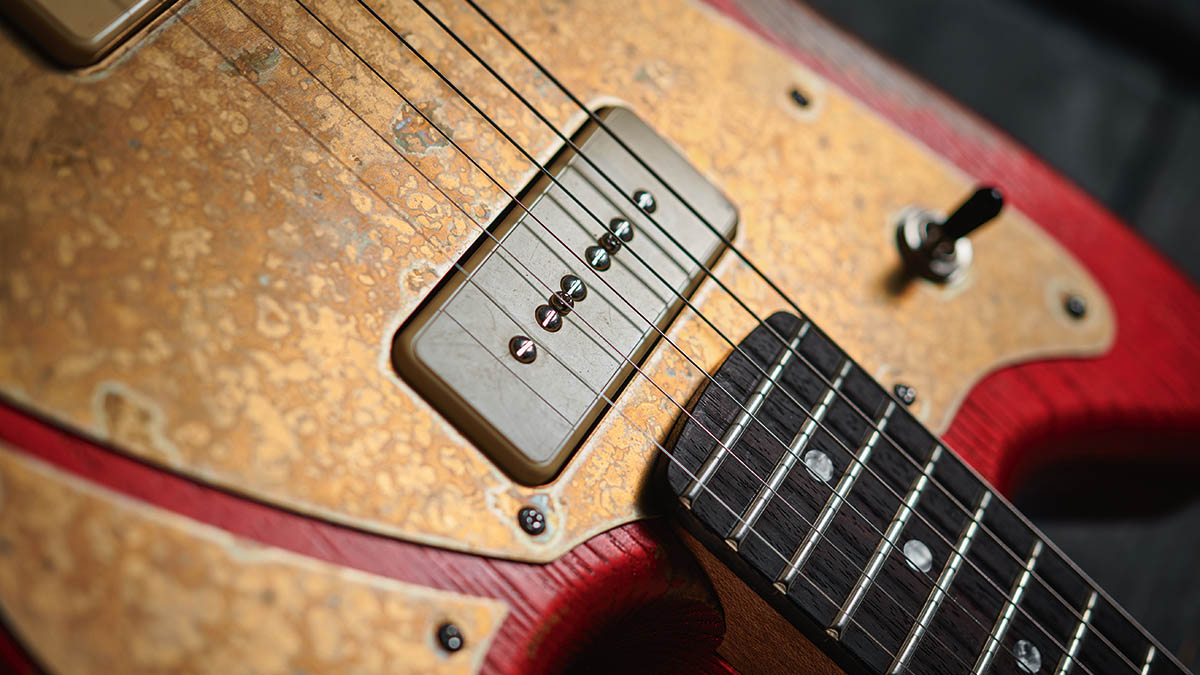
While many makers draw their own versions of the classic offset, the 112 seems to stick fairly close to its obvious inspiration in terms of actual shape – it’s just over 45mm thick, with a generous edge radius and the usual contouring.
Speaking of contouring, there’s none of that around the body heel, which is left square-edged with the usual neckplate and four-screw attachment. There’s nice detail here with the antiqued brass used for the neckplate (and the two-piece scratchplate and bridge plate) engraved with ‘Handmade Paoletti Guitars’. These plates have a fairly thick clear plastic covering, which is intended to be removed by the customer on receipt.
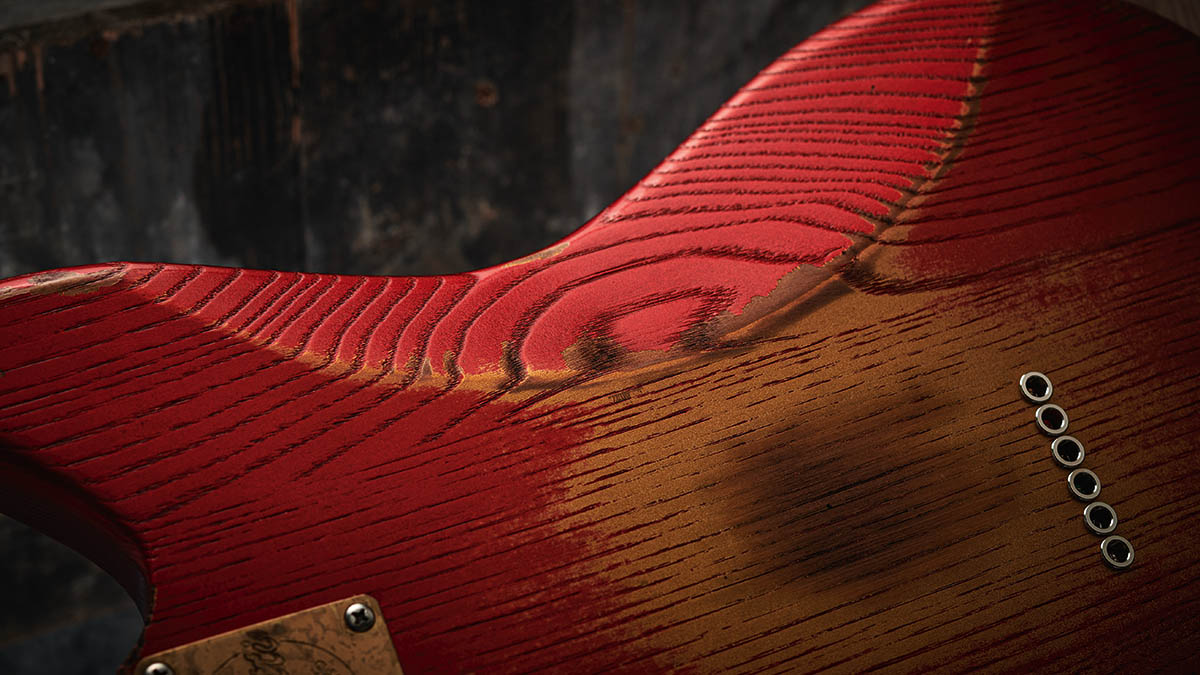
Keeping with this ‘don’t change the tradition’ style, the scale length is classic Fender and the rift-sawn maple neck is apparently roasted and is completely standard with no figuring. The thick-slab rosewood fingerboard features basic dot inlays and is a lovely deep brown in colour, with medium-gauge fretwire (Dunlop 6110) that’s cleanly installed on its flatter‑than-Fender 305mm (12-inch) radiused face.
The headstock shape sails pretty close to the Fender wind – a ’50s/’60s Stratocaster shape just rounded on the treble-side flare. Truss rod access? This is old-school, meaning you’ll need to slip the neck up to adjust it.
Whether it’s the scale length or the construction, there’s a slightly zingier character than you might hear on a Gibson Les Paul Special
Hardware jumps between standard off-the-shelf Kluson Deluxe split-post tuners and a proprietary through-strung hardtail six-saddle bridge – the baseplate is antiqued brass, the saddles a steel alloy.
As we mentioned, the full-face two-piece scratchplate is cut from brass and holds the simplistic circuit. The three-way toggle pickup selector possibly should have a cream or gold-coloured tip (black looks wrong to us), and that’s paired with master volume and tone controls fitted with those shotgun shell-case control knobs. An interesting detail.
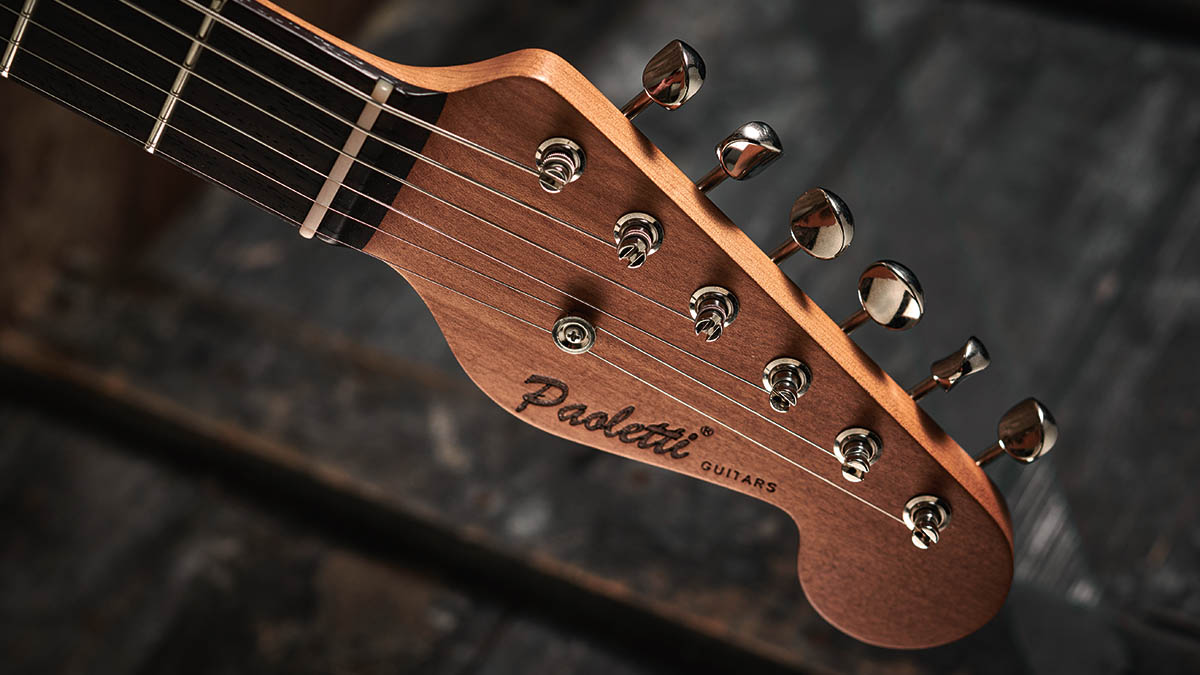
Feel & Sounds
Like an increasing number of smaller makers, Paoletti creates its own pickups, rather than using an outside source. Having auditioned the impressive-sounding Richard Fortus Signature #3 model last year, we had high hopes and these soapbars frankly sound superb on this platform.
They come across as pretty full-bodied P-90s of a medium output with sizzle and grit full up at the bridge, softer and warmer on jazzier cleans at the neck, with nuanced pluck and funk in the mid position.
Whether it’s the longer scale length and/or the construction, there’s a slightly zingier character than you might hear on a Gibson Les Paul Special and a little less grind and cream than we hear from our ’57 Les Paul Junior reference. As ever, though, the ‘fat single coil’ or ‘clearer humbucker’ characters of the P-90 design – which is now nearly 80 years old! – shine through.
Though not super-light, the weight is good for the larger-bodied Jazzmaster style and the medium C neck shape is exactly what you’d expect. There’s a relatively deep but not over-big ‘C’ with a nut width of 42.4mm, and a 1st fret depth of 22.2mm filling out to 24.8mm by the 12th fret. Our sample’s neck needed a slight truss-rod tweak, which, as discussed, means slipping the neck up and out of its pocket to adjust with the supplied long Allen key. Luckily, our first attempt seemed to work.
With very slight relief and an action height of approximately 1.5mm at the 12th fret treble side and 1.8mm on the bass-side, we can’t fault the playability. In fact, the slightly flatter fingerboard radius actually makes the neck come across as a nicely refretted old Fender. It’s a simple dish, but one that’s hard to fault in terms of construction, playability or sound.
Verdict

We can’t mince our words; there are plenty of makers out there working in this style, and plenty (though not all) may cost you less without dropping in apparent quality. But not all of these brands are available to have a strum on in various UK stores, including Music Street and Guitar Village.
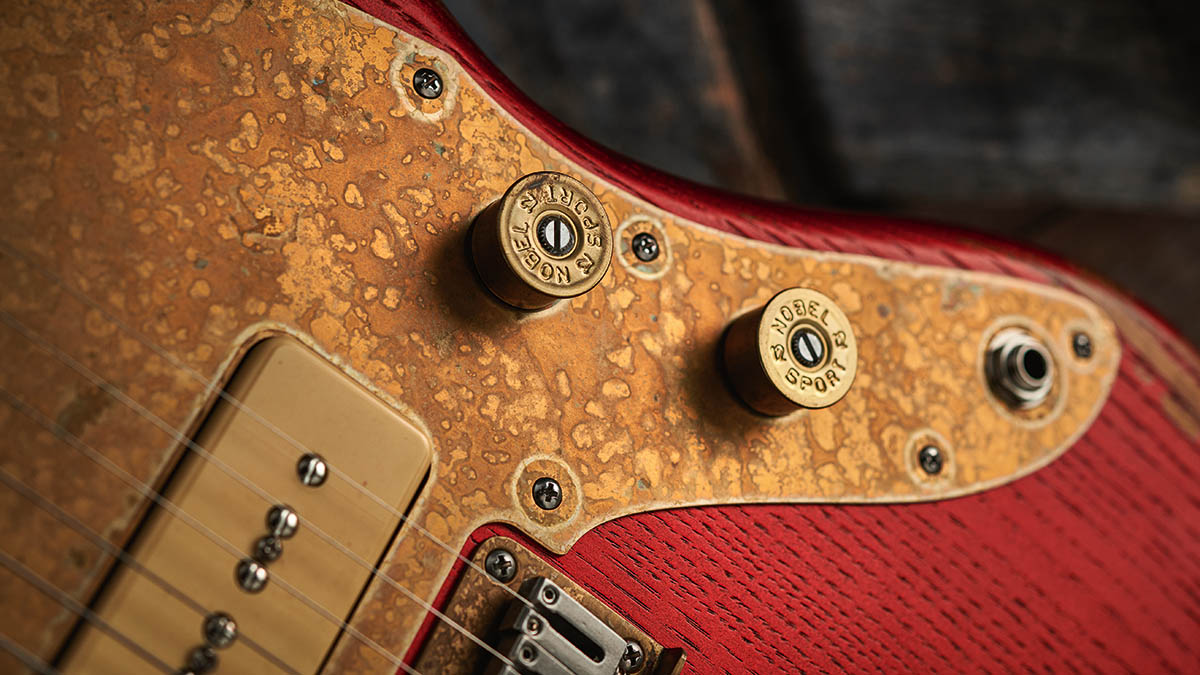
There is a wide menu of custom-finish and pickup‑configuration options and the Paoletti guitars we’ve had through our hands so far have certainly impressed in terms of their sound.
But is that enough to justify the not-so-inconsiderable price? You might look at the spec and conclude it’s a ‘no’ for you. But if you get one in your hands – as we did – then you might just think differently.
Specs
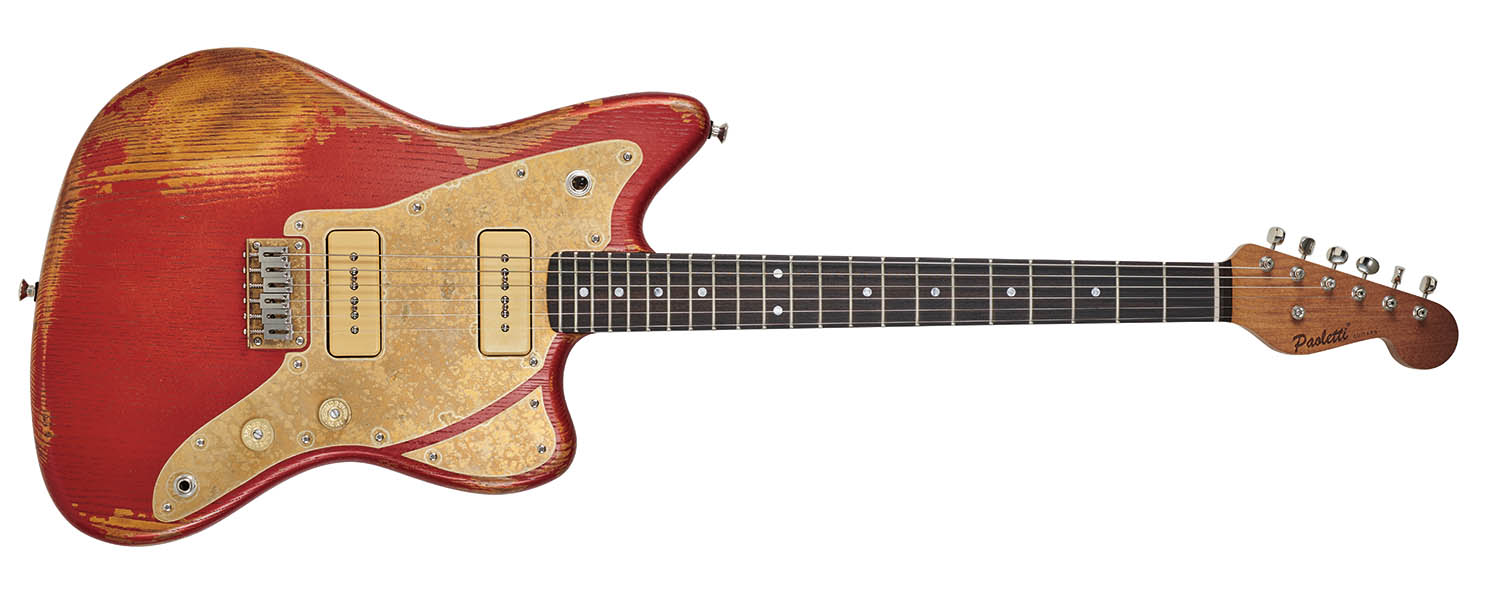
- PRICE: £3,639 (inc case)
- ORIGIN: Italy
- TYPE: Offset double-cutaway solid body electric guitar
- Body: 3-piece reclaimed chestnut
- NECK: Canadian roasted maple, ‘medium C’ profile bolt-on
- SCALE LENGTH: 648mm (25.5”)
- NUT/WIDTH: Bone/42.4mm
- FINGERBOARD: Rosewood, dot inlays, 305mm (12”) radius
- FRETS: 22 (Dunlop 6110)
- HARDWARE: Paoletti OEM 6-block-saddle through-strung bridge, Kluson Deluxe vintage-style split‑post tuners – raw brass and nickel plating
- STRING SPACING, BRIDGE: 52mm
- ELECTRICS: 2x Paoletti P-90 soapbar single coils, 3-way lever pickup selector switch, master volume, master tone,
- WEIGHT (kg/lb): 3.71/8.162
- OPTIONS: Maple fingerboard, various pickup configurations, large colour choice
- RANGE OPTIONS: The 112 is also available in the natural Wine Series and semi-solid Lounge Series starting from £3,439
- LEFT HANDERS: Yes
- FINISHES: Candy Apple Red (as reviewed) – lightly metallic red over gold antiqued body
- CONTACT: Paoletti Guitars

Dave Burrluck is one of the world’s most experienced guitar journalists, who started writing back in the '80s for International Musician and Recording World, co-founded The Guitar Magazine and has been the Gear Reviews Editor of Guitarist magazine for the past two decades. Along the way, Dave has been the sole author of The PRS Guitar Book and The Player's Guide to Guitar Maintenance as well as contributing to numerous other books on the electric guitar. Dave is an active gigging and recording musician and still finds time to make, repair and mod guitars, not least for Guitarist’s The Mod Squad.
“It holds its own purely as a playable guitar. It’s really cool for the traveling musician – you can bring it on a flight and it fits beneath the seat”: Why Steve Stevens put his name to a foldable guitar
“Finely tuned instruments with effortless playability and one of the best vibratos there is”: PRS Standard 24 Satin and S2 Standard 24 Satin review
